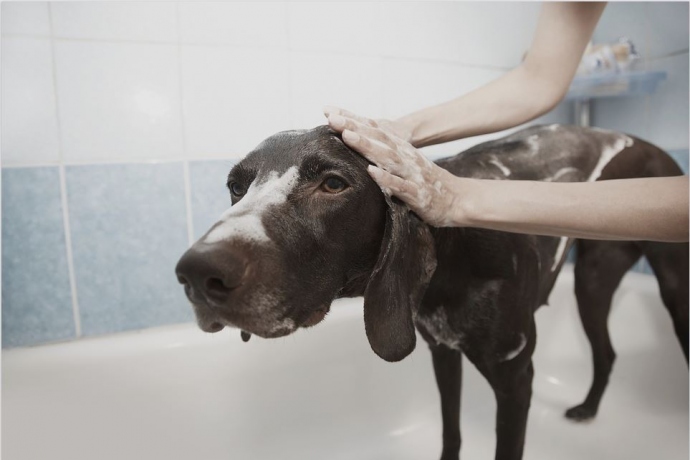Grooming is a necessary aspect of proper dog care. Unfortunately, sending your dog to a professional groomer is expensive, and a lot of people opt to groom their dog themselves. Grooming your dog at home is a great way to save money, but there are some things you should consider before tackling the job. Grooming is a lot more than just giving your dog a bath, and here are just four major considerations that you need to be aware of in terms of ensuring your dog’s optimum health and hygiene.

Moisturize Their Paws
Grooming a dog is about tending to their personal hygiene needs, which includes their paws. Believe it or not, your dog is affected by the cold, heat, and dry weather just as much as you are. When their paws walk on harsh surfaces, extreme temperatures, and are frequently scrubbed of their natural oils, the pads on the bottom of their paws can become dry and cracked. Just like when our skin gets too dry, this drying and cracking can lead to bleeding and infection, and if you wash your dog with soap on a regular basis, this can also strip their paws of their natural oils. Applying a moisturizer to their paws will help to soften the skin and protect against future damages. Make sure not to use moisturizers or lotions made for humans, as things that are safe for humans can be deadly for dogs. Get a special dog moisturizer, or use pure coconut oil for a natural solution that is safe for them to lick.
Use Home-Safe Shampoos
Shampooing your dog’s fur is an important way to remove excess oil, dirt, and parasites. The most common parasites that your dog will attract will be fleas and ticks. There are special grooming shampoos that contain anti-tick and anti-flea chemicals to help keep your dog’s fur free of parasites. Unfortunately, these chemicals can cause a lot of damage to septic tanks, it’s important to be aware of the effect of your soaps on the system they will drain into. Anti-flea and anti-tick chemicals will kill good bacteria in a septic tank, crippling its ability to properly break down and manage the bad septic tank bacteria. When you decide to start grooming your dog at home, be aware of what system you have, what its needs are, and if you can’t find a septic-safe soap, consider washing your dog outside or in the garage.
Managing The Fur
Some dogs have been blessed with thick, heavy fur that is perfect for cuddling. However, as you’ve no doubt experienced with your furniture, this fur can get everywhere fast if it isn’t brushed regularly. Excess fur can become specifically problematic when washing your dog in your sink or tub, as the strands can easily slip past hair traps, as they’re shorter in length than most human hair. The fur will get into your plumbing, clog up the pipes, and often decompose in the wrong places. Use special drain covers to trap the fur before it gets into your drain, and ensure that you brush your dog before washing.
Cleaning Delicate Places
A professional groomer will also clean the inside of your dog’s ears and around your dog’s eyes. These are places that can be easily overlooked during a do-it-yourself dog grooming. Doing this allows you to check for infection or mites, and works to prevent those conditions, as well. It is important that you know how to do this correctly, as soap in your dog’s eyes is as fun as soap in a human’s, and getting water in your dog’s ears can cause an ear infection later. Both are best cleaned with a warm, damp cloth without soap, though it’s important to look up the needs of your particular dog’s breed before doing this yourself.
Grooming isn’t every dog’s favorite part of their care routine, but it is essential for maintaining their health and a high quality of life. If your dog has a bad reaction to grooming, help them get through the experience by offering them treats during the ordeal. Ensure that you are calm throughout as well by taking the time to research what needs to be done. Dogs pick up their cues from their owners, so if you’re confident and prepared, your dog will feel much more secure in your care throughout the cleaning process.

